
Kyzyl-Oi: The Hidden Gem of Kyrgyzstan
Discover the untouched beauty of Kyzyl-Oi, a serene village in Kyrgyzstan offering breathtaking landscapes, rich cultural experiences, and a peaceful retreat in nature.
Nestled in the heart of Kyrgyzstan, Kyzyl-Oi is a captivating village that offers travelers a genuine glimpse into traditional Kyrgyz life. Surrounded by the majestic Tian Shan mountains, this idyllic location is a haven for nature lovers and adventure seekers alike. The landscape is adorned with stunning red cliffs, lush green valleys, and the serene waters of the Kekemeren River, making it a paradise for photographers and hikers. Kyzyl-Oi is not just about its natural beauty; it is also a place rich in culture and history. The village is home to a warm and welcoming community that takes pride in their nomadic heritage. Visitors can experience the local way of life by staying in a traditional yurt, sampling delicious homemade Kyrgyz cuisine, and participating in cultural events and festivals. The village's unspoiled nature and slow-paced lifestyle offer a perfect retreat from the hustle and bustle of city life. One of the highlights of visiting Kyzyl-Oi is exploring the surrounding landscapes. The nearby landscapes offer a plethora of outdoor activities, from trekking and horseback riding to bird watching and fishing. Whether you are an avid adventurer or simply looking to unwind, Kyzyl-Oi provides an unforgettable experience that will leave you yearning for more.
Local tips in Kyzyl-Oi
- Visit during the summer months (June to August) for the best weather and outdoor activities.
- Bring cash as there are no ATMs or credit card facilities in the village.
- Learn a few basic phrases in Kyrgyz or Russian to communicate with the locals.
- Pack warm clothing, even in summer, as temperatures can drop significantly at night.
- Hire a local guide to explore the hidden trails and to fully appreciate the region's natural beauty.
Kyzyl-Oi: The Hidden Gem of Kyrgyzstan
Nestled in the heart of Kyrgyzstan, Kyzyl-Oi is a captivating village that offers travelers a genuine glimpse into traditional Kyrgyz life. Surrounded by the majestic Tian Shan mountains, this idyllic location is a haven for nature lovers and adventure seekers alike. The landscape is adorned with stunning red cliffs, lush green valleys, and the serene waters of the Kekemeren River, making it a paradise for photographers and hikers. Kyzyl-Oi is not just about its natural beauty; it is also a place rich in culture and history. The village is home to a warm and welcoming community that takes pride in their nomadic heritage. Visitors can experience the local way of life by staying in a traditional yurt, sampling delicious homemade Kyrgyz cuisine, and participating in cultural events and festivals. The village's unspoiled nature and slow-paced lifestyle offer a perfect retreat from the hustle and bustle of city life. One of the highlights of visiting Kyzyl-Oi is exploring the surrounding landscapes. The nearby landscapes offer a plethora of outdoor activities, from trekking and horseback riding to bird watching and fishing. Whether you are an avid adventurer or simply looking to unwind, Kyzyl-Oi provides an unforgettable experience that will leave you yearning for more.
When is the best time to go to Kyzyl-Oi?
Iconic landmarks you can’t miss
Osh Bazaar
Explore Osh Bazaar in Bishkek for an authentic taste of Kyrgyz culture, vibrant spices, and local delicacies in a bustling market atmosphere.

Ala Too Square
Explore Ala Too Square, a vibrant cultural hub in Bishkek, showcasing stunning monuments, lively events, and a glimpse into Kyrgyzstan's rich history.
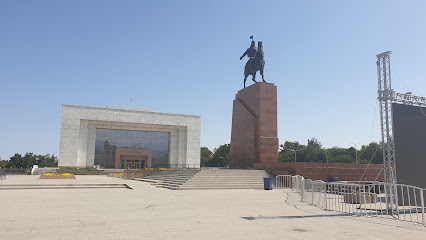
Victory Square
Visit Victory Square in Bishkek for a serene memorial park experience that honors the heroes of World War II amidst lush greenery and cultural richness.

Ala Archa National Park
Experience the breathtaking beauty of Ala Archa National Park, a must-visit destination in Kyrgyzstan for nature lovers and adventure enthusiasts.

Burana Tower
Explore the Burana Tower, a historic minaret in Kyrgyzstan, showcasing the rich heritage of the ancient Silk Road amid stunning landscapes.

Rukh Ordo
Discover the essence of Kyrgyz culture at Rukh Ordo, a captivating cultural center nestled by the shores of Lake Issyk-Kul.
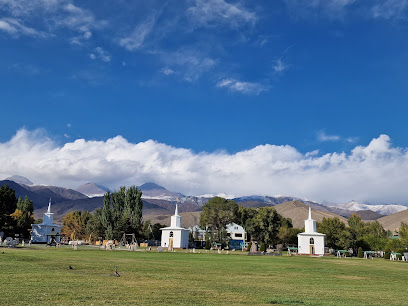
Dungan Mosque
Explore the unique Dungan Mosque in Karakol, a stunning blend of architectural styles and cultural heritage that captivates every visitor.

Kashka Suu Ski Resort
Experience the best of winter sports and breathtaking views at Kashka Suu Ski Resort in Kyrgyzstan, perfect for adventure seekers and families.

Ata Beyit Memorial
Explore the serene Ata Beyit Memorial in Tash-Dobo, a peaceful tribute to Kyrgyzstan's heroes amid stunning landscapes.

Altyn-Arashan
Explore Altyn-Arashan: A Natural Wonder in Kyrgyzstan's Majestic Mountains with Hot Springs and Stunning Views.

Barskoon Waterfall
Immerse yourself in the stunning beauty of Barskoon Waterfall, a must-see natural attraction in Kyrgyzstan, featuring breathtaking views and serene hiking trails.

Vladimir Lenin Statue
Explore the historical significance of the Vladimir Lenin Statue in Bishkek, a monumental tribute in the heart of Kyrgyzstan's vibrant capital.

Seven Bulls Rock
Explore the breathtaking landscapes and unique rock formations at Seven Bulls Rock, a stunning hiking area in Kyrgyzstan.
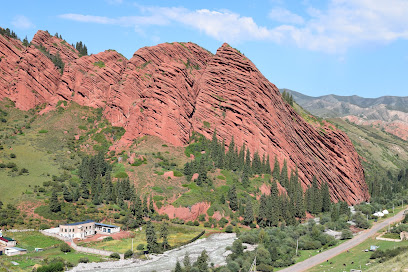
Tash Rabat
Discover the ancient caravanserai of Tash Rabat, a historical treasure nestled in Kyrgyzstan's stunning Tian Shan mountains, rich in culture and natural beauty.

Sokuluk Gorge
Explore the stunning landscapes and rich biodiversity of Sokuluk Gorge, a breathtaking natural attraction in Kyrgyzstan, perfect for hiking and photography.

Unmissable attractions to see
Altyn-Arashan
Explore Altyn-Arashan, a breathtaking nature preserve in Kyrgyzstan known for its stunning landscapes and rejuvenating hot springs.

Barskoon Waterfall
Experience the stunning beauty of Barskoon Waterfall, a natural gem in Kyrgyzstan, surrounded by majestic mountains and lush landscapes.

Seven Bulls Rock
Experience the breathtaking beauty and adventure of Seven Bulls Rock, a premier hiking destination in Kyrgyzstan's stunning Dzhetyoguz region.

Sokuluk Gorge
Explore the breathtaking landscapes of Sokuluk Gorge, a natural wonder in Kyrgyzstan ideal for hiking, photography, and immersing in nature's beauty.

Walnut forest
Explore the world's largest walnut forest in Arslanbob, a breathtaking hiking area teeming with natural beauty and cultural significance.

Essential places to dine
Cafe Faiza
Experience authentic Kyrgyz cuisine at Cafe Faiza in Bishkek—a delightful blend of local flavors and warm hospitality.

KFC
Discover the flavors of fast food at KFC Ortosay City in Bishkek - where delicious meets convenience!

Frunze restaurant
Experience the best of Kyrgyz cuisine at Frunze Restaurant in Bishkek - where tradition meets modern gastronomy.

Kafe Bukhara Assorti
Discover the delightful flavors of Kyrgyzstan at Kafe Bukhara Assorti, a charming restaurant-café in Bishkek offering diverse local and international dishes.

SIERRA Coffee Manas Ave
Discover Bishkek's culinary gem at SIERRA Coffee – where rich flavors meet warm hospitality.

Torro Grill & Bar
Indulge in exquisite grilled cuisine at Torro Grill & Bar, Bishkek's premier destination for food lovers seeking rich flavors and a vibrant atmosphere.

CHICKEN STAR
Discover authentic Korean flavors at Chicken Star in Bishkek – where tradition meets modern dining in a vibrant setting.

ANT'S
Experience the delightful fusion of local charm and Western flavors at ANT'S Coffee Shop in Bishkek - your perfect retreat for coffee lovers.

Bellagio Coffee
Discover Bishkek's best-kept secret at Bellagio Coffee - where every sip feels like home!

Red Cow
Experience exquisite dining at Red Cow in Bishkek—where local flavors meet international culinary artistry in a vibrant atmosphere.

Mac Burger & pizza
Experience delicious burgers and pizzas at Mac Burger & Pizza in Bishkek – the ultimate fast food destination for travelers seeking comfort food.
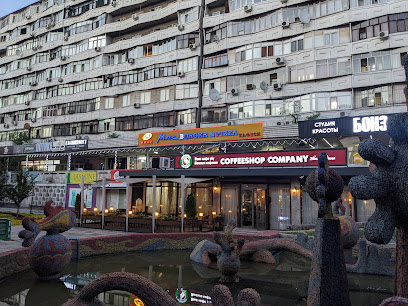
Nar Restaurant
Experience exquisite Kyrgyz cuisine in an elegant setting at Nar Restaurant in Bishkek.

Villa V Club
Discover the delightful fusion of exquisite dining and refreshing leisure at Villa V Club in Bishkek.

Restoran Ala-Too
Experience authentic Kyrgyz cuisine at Restoran Ala-Too in Kyzyl-Kiya - where tradition meets taste in every dish.
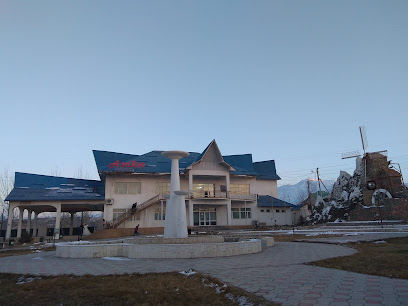
Nazgul Guesthouse Kyzyl Oï
Experience authentic Kyrgyz hospitality at Nazgul Guesthouse Kyzyl Oï—your cozy retreat amidst breathtaking landscapes.
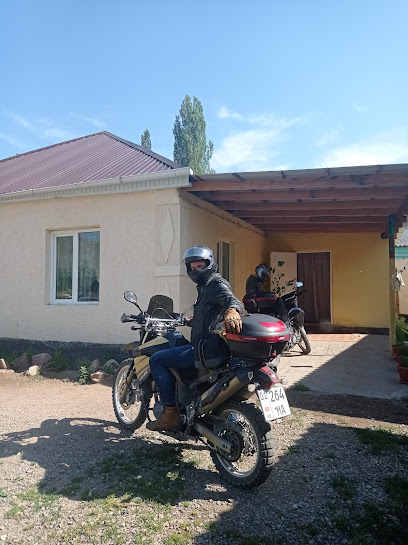
Markets, malls and hidden boutiques
Osh Bazaar
Explore Osh Bazaar in Bishkek: A vibrant market filled with local spices, textiles, and authentic Kyrgyz culture. A true gem for every tourist!

Dordoi Bazaar
Discover the authentic Kyrgyz experience at Dordoi Bazaar, Bishkek's bustling market for local crafts, fresh produce, and delicious street food.

Asia Mall
Discover a world of shopping, dining, and entertainment at Asia Mall in Bishkek, the ultimate destination for tourists seeking a vibrant retail experience.

ZUM Aichurok
Explore the vibrant shopping scene at ZUM Aichurok, Bishkek's premier shopping mall, offering a blend of local and international brands.

Bishkek Park
Experience the vibrant shopping scene at Bishkek Park, where international brands meet local charm in Kyrgyzstan's premier retail destination.

GUM Chynar
Discover GUM Chynar in Bishkek: A vibrant shopping mall blending modern retail and local culture with diverse dining options.

ТРЦ Dordoi Plaza 2
Explore the bustling Dordoi Plaza 2 in Bishkek, where shopping, dining, and entertainment come together in a vibrant atmosphere.

Jayma Bazaar
Experience the vibrant atmosphere and rich cultural offerings at Jayma Bazaar, the heart of Osh, Kyrgyzstan, where tradition meets local commerce.

@kg
Explore a premier electronics store in Bishkek, offering the latest gadgets and expert advice for travelers and tech enthusiasts alike.

Besh Sary Siti
Experience the lively atmosphere of Besh Sary Siti in Bishkek, where local culture meets vibrant shopping at Osh Bazaar.

Issyk Kul
Explore the breathtaking Issyk Kul Lake, a serene destination in Kyrgyzstan offering stunning vistas, rich cultural experiences, and endless adventures.

Issyk-Kul Brand Shop
Explore the Issyk-Kul Brand Shop in Karakol for unique souvenirs, local delicacies, and a taste of Kyrgyz culture.

ОПиО Beeline
Stay connected while exploring Kyrgyzstan with ОПиО Beeline, your trusted telecommunications service provider in Kyzyl-Suu.

TUMAR Art Salon - Kyrgyz Souvenirs & Gifts
Discover the beauty of Kyrgyz handicrafts at TUMAR Art Salon, your destination for authentic souvenirs and gifts in Bishkek.

Old Tsum (Souvenirs)
Explore Old Tsum Souvenir Store in Bishkek for authentic Kyrgyz crafts, art, and unique gifts that capture the essence of Kyrgyz culture.

Essential bars & hidden hideouts
Promzona Club
Discover the electrifying nightlife at Promzona Club, Bishkek's premier destination for dancing, socializing, and unforgettable experiences.

Metro Pub
Discover the vibrant nightlife of Bishkek at Metro Pub, where great drinks and live music create unforgettable experiences.

Pinta Pub Frunze
Experience the vibrant nightlife at Pinta Pub Frunze in Bishkek, where great drinks, delicious food, and friendly faces await.

Munchen pub
Experience the vibrant nightlife of Bishkek at Munchen Pub, where drinks, live music, and a lively atmosphere come together for an unforgettable evening.

Center Bar
Experience the vibrant nightlife at Center Bar in Bishkek, offering dance, karaoke, delicious food, and a cozy lounge atmosphere.

Sky-bar Osh
Discover the vibrant atmosphere and stunning skyline views at Sky-bar Osh, the ultimate nightlife destination in the heart of Osh.

Bar 12
Experience the vibrant nightlife of Bishkek at Bar 12, where modern ambiance meets local charm in a lively atmosphere.

Issyk Kul
Discover the enchanting Issyk Kul, a stunning alpine lake in Kyrgyzstan, perfect for relaxation, adventure, and cultural exploration.

Kipish Bar
Discover the vibrant nightlife at Kipish Bar in Bishkek, where great drinks and an energetic atmosphere await you.

Morozhenoye Oazis
Discover the vibrant atmosphere of Morozhenoye Oazis, Kyzyl-Kiya's top bar for refreshing drinks and local flavors.

Norm bar
Experience the vibrant nightlife of Bishkek at Norm Bar, where local charm meets modern flair in a lively atmosphere.

Teplo bar
Experience the charm of Bishkek at Teplo Bar, where cozy ambiance meets delightful drinks for an unforgettable night out.

Imperia Bar
Discover Imperia Bar in Kyzyl-Kiya, where local charm meets vibrant nightlife, offering an unforgettable experience for every traveler.

Avtovokzal
Explore the vibrant nightlife at Avtovokzal bar in Kyzyl-Kiya, where local culture meets a welcoming atmosphere and delicious drinks await.

voice karaoke bar
Sing, dance, and enjoy a night of fun at Kyzyl-Adyr's top karaoke bar, where every night is a celebration of music and friendship.
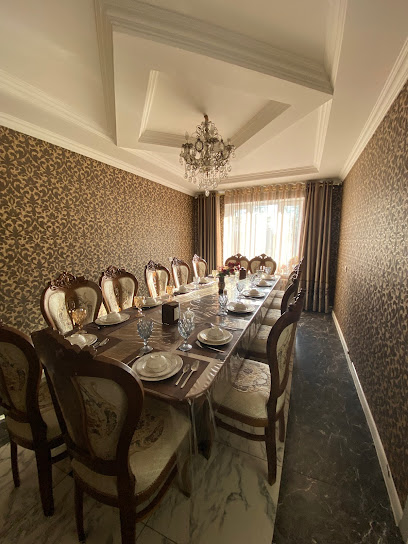
Local Phrases
-
- HelloСаламатсызбы?
[salamatsyzby?] - GoodbyeЖакшы калыңыз
[jakshy kalynyz] - YesОоба
[ooba] - NoЖок
[jok] - Please/You're welcomeМиндеттүү болуңуз
[mindettuu bolunuz] - Thank youРахмат
[rahmat] - Excuse me/SorryКечиресиз
[kechiresiz] - How are you?Кандайсыз?
[kandaysyz?] - Fine. And you?Жакшым. Сиз кандайсыз?
[jakshym. siz kandaysyz?] - Do you speak English?Сиз англисче сөйлөсүңүзбү?
[siz angliche soylösüözby?] - I don't understandМени түшүнбөйт
[meni tüshünböyt]
- HelloСаламатсызбы?
-
- I'd like to see the menu, pleaseМен менюгө карап бергөм келет
[men menügö karap bergöm kelet] - I don't eat meatМен басым сүйбөйт
[men basym süyböyt] - Cheers!Тереңсиздерге!
[terengsizderge!] - I would like to pay, pleaseМен төлөм кылгым келет
[men tölöm kylgym kelet]
- I'd like to see the menu, pleaseМен менюгө карап бергөм келет
-
- Help!Көмөк
[kömök] - Go away!Жүр
[jür] - Call the Police!Полицияга чакырыңыз
[politsiyaga chakyrınız] - Call a doctor!Докторго чакырыңыз
[doktorgo chakyrınız] - I'm lostМен таптым
[men taptım] - I'm illМен жараандайм
[men jarandaym]
- Help!Көмөк
-
- I'd like to buy...Мен ... сатып алуу келет
[men ... satyp aluu kelet] - I'm just lookingМен тек карап турот
[men tek karap turot] - How much is it?Бул кандай ба?
[bul kanday ba?] - That's too expensiveБул көп жакшы
[bul köp jakshy] - Can you lower the price?Сиз баа төмөндөгүү кыласызбы?
[siz baa tömöndögüü kylasyzby?]
- I'd like to buy...Мен ... сатып алуу келет
-
- What time is it?Саат канчада?
[saat kanchada?] - It's one o'clockБир саат
[bir saat] - Half past (10)Ондук учур
[onduk uchur] - MorningКүн
[kün] - AfternoonКеч
[kech] - EveningТүн
[tün] - YesterdayКече
[keche] - TodayБүгүн
[bügün] - TomorrowЭртең
[erteñ] - 1Бир
[bir] - 2Эки
[eki] - 3Үч
[üch] - 4Төрт
[tört] - 5Беш
[besh] - 6Алты
[alty] - 7Жети
[jeti] - 8Сегиз
[segiz] - 9Тогуз
[toguz] - 10Он
[on]
- What time is it?Саат канчада?
-
- Where's a/the...?... кайда?
[... kaida?] - What's the address?Мекен-жай кандай?
[meken-jay kanday?] - Can you show me (on the map)?Мен менен караша аласызбы (карта жеңилдерде)?
[men menen karasha alasyzby (karta jeñilderde)?] - When's the next (bus)?Кийинки (автобус) кача?
[kiyinki (avtobus) kacha?] - A ticket (to ....)Билет (....ге)
[bilet (....ge)]
- Where's a/the...?... кайда?
History of Kyzyl-Oi
-
Kyzyl-Oi, nestled in the stunning Suusamyr Valley, has a history that dates back to ancient times. The region was part of the Silk Road, where caravans traversed the rugged terrain, creating a melting pot of cultures. Archaeological findings suggest the existence of early settlements in the area, indicating its long-standing significance in trade and cultural exchange.
-
In the 17th and 18th centuries, the area around Kyzyl-Oi came under the influence of the Kyrgyz Khanate. The Kyrgyz people, known for their nomadic lifestyle, used the valley for seasonal migrations. They established temporary camps and pastures, and the lush valley provided an ideal setting for their livestock. This era left a lasting impact on the cultural landscape of Kyzyl-Oi, with traditions and practices that are still evident today.
-
The late 19th century saw the expansion of the Russian Empire into Central Asia, including Kyrgyzstan. Kyzyl-Oi, like many other parts of the region, experienced significant changes during this period. Russian settlers introduced new agricultural practices, and the village began to take on a more permanent form. Infrastructure developments, such as roads and bridges, improved connectivity with other parts of the empire, facilitating trade and communication.
-
With the advent of Soviet rule in the early 20th century, Kyzyl-Oi underwent further transformation. The collectivization policies of the Soviet government led to the establishment of collective farms, known as kolkhozes. These farms centralized agricultural production and altered the traditional way of life for many residents. Soviet-era architecture and monuments still dot the landscape, serving as reminders of this period in the village's history.
-
Following the dissolution of the Soviet Union in 1991, Kyrgyzstan gained independence, and Kyzyl-Oi began to chart its own course. The village has embraced its cultural heritage while adapting to modernity. Efforts to promote tourism have highlighted Kyzyl-Oi's natural beauty and historical significance, attracting visitors from around the world. The local community continues to preserve its unique traditions, making Kyzyl-Oi a vibrant and culturally rich destination.
Kyzyl-Oi Essentials
-
Kyzyl-Oi is located in the Jumgal District of the Naryn Region in Kyrgyzstan. The nearest international airport is Manas International Airport in Bishkek, approximately 200 kilometers away. From Bishkek, you can take a shared taxi or a minibus (marshrutka) to Kyzyl-Oi. The journey typically takes around 5 to 6 hours by road and offers scenic views of the Kyrgyz landscape. Private car rentals are also available for those who prefer a more flexible travel schedule.
-
Kyzyl-Oi is a small village, and many of its attractions are within walking distance. Local taxis are available for longer trips within the area. Public minibuses (marshrutkas) operate between Kyzyl-Oi and nearby towns. Renting a car is a convenient option if you plan to explore the surrounding regions at your own pace. Be mindful that road conditions can vary, especially in remote areas.
-
The official currency in Kyrgyzstan is the Kyrgyzstani Som (KGS). Credit cards are rarely accepted in Kyzyl-Oi, so it is advisable to carry sufficient cash. ATMs are scarce in rural areas, so withdraw enough money in Bishkek or larger towns before heading to Kyzyl-Oi. Local markets and small shops primarily deal in cash.
-
Kyzyl-Oi is generally a safe destination for tourists. However, standard travel precautions should be taken. Avoid walking alone at night in unfamiliar areas and keep an eye on your belongings in crowded places. There are no specific high-crime areas targeting tourists, but it is always best to stay vigilant and aware of your surroundings.
-
In case of emergency, dial 112 for immediate assistance. The nearest medical facilities are located in larger towns nearby, so it is recommended to have travel insurance that covers medical emergencies. For minor health issues, there are local pharmacies where you can purchase over-the-counter medications. Familiarize yourself with basic first aid and carry a travel health kit.
-
Fashion: Do dress modestly, especially when visiting religious sites. Avoid wearing revealing clothing. Religion: Do respect local customs and traditions. Always cover your head and take off your shoes when entering mosques. Public Transport: Do be respectful and give up your seat to elderly passengers. Don’t eat or drink on public transport. Greetings: Do greet people with a handshake. A slight bow of the head is a sign of respect. Eating & Drinking: Do try local delicacies and accept food offerings graciously. Don’t refuse hospitality, as it is considered impolite.
-
To experience Kyzyl-Oi like a local, visit the village markets where you can buy fresh produce and traditional Kyrgyz goods. Engage with locals; they are often friendly and willing to share stories about the village’s history and culture. Don’t miss the opportunity to experience a yurt stay and traditional Kyrgyz cuisine. Participate in local festivals and events to immerse yourself in the culture.
Nearby Cities to Kyzyl-Oi
-
Things To Do in Bishkek
-
Things To Do in Tokmok
-
Things To Do in Kochkor
-
Things To Do in Jalal-Abad
-
Things To Do in Kemin
-
Things To Do in Osh
-
Things To Do in Andijan
-
Things To Do in Namangan
-
Things To Do in Cholpon-Ata
-
Things To Do in Karakol
-
Things To Do in Angren
-
Things To Do in Shymkent
-
Things To Do in Chirchiq
-
Things To Do in Tashkent
-
Things To Do in Khujand





